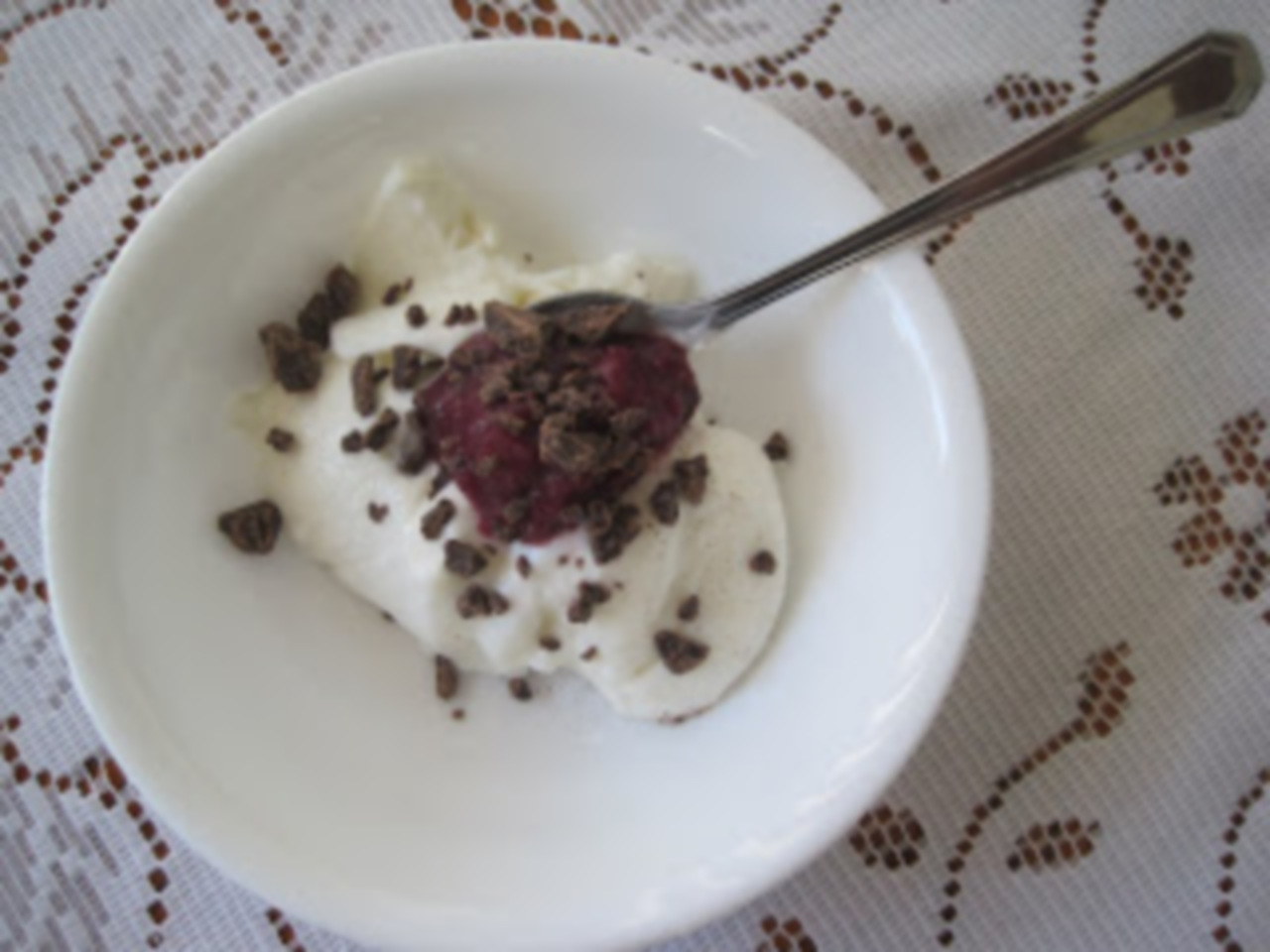Yogurt

For years I didn’t think I liked yogurt. Of course, I was eating low fat, commercial brands that market themselves as healthy but really contain lots of sugar and additives (not to mention low fat isn’t as healthy as we’ve been led to believe). Then one day I bought Fage/Total full fat Greek Yogurt and I realized it wasn’t that I didn’t not like yogurt. I just didn’t like ‘yogurt’.
Over the years, yogurt has become a staple in our house. It’s my son’s favorite thing to eat when he gets home from school. He enjoys mixing his own rather unique blends. Most days I have my own unique blend for breakfast.
I also use it for anything that usually calls for mayonnaise or sour cream. I know it’s a common practice of those cutting calories or fat, but considering my yogurt actually has *extra* fat, that’s certainly not an issue in our house. My husband has never liked mayonnaise and though I used to, I stopped eating it because it was too difficult to find a brand that didn’t contain soybean or similarly unhealthy oils.
Recently I discovered it’s amazing in place of buttermilk. Biscuits, muffins, scones and pancakes are softer, lighter and fluffier. The first time I tried this with pancakes my family wanted to know what I did differently – and strongly suggested I make this alteration to the recipe permanent.
It didn’t take long before I was spending a significant amount of money every week on yogurt. It seemed like such a waste when so many others I knew I were making it at home.
I read several websites and experimented a bit on my own and came up with a method that works for me. I have been making small amounts several times a week, but am thinking of doubling it and trying to get away with once a week. Right now I’m using:
16 oz whole milk
4 oz cream
1/2 t gelatin
Measure the milk and cream into a pan. Sprinkle the gelatin on top of the milk/cream and allow to stand a few minutes. I know many recipes suggest powdered milk to thicken the yogurt, but gelatin supplies added nutrients and we like the ever so slightly gelled texture.
Slowly heat to 180 degrees. I use a thermometer since I’m not good at guessing. Sometimes if I’ve been baking, I put the pan in the oven instead of on top the of the stove to use the residual heat.
Remove from heat and allow to cool to 110 degrees
When it’s cooled, stir in a few tablespoons of reserved yogurt. I used Fage to start with, but now use some of my previous batch. I’ve heard it loses strength after a while, so every so often I’ll buy a yogurt and use that to freshen it up a bit.
Pour into jars and keep warm and keep at 100 degrees for at least 8 hours.
This is where it really varies. Some people use a yogurt maker. Some people use crock pots, or Styrofoam ice chests. I’ve even heard you can incubate it in the hot car on a warm summer day. In the summer, I leave mine overnight in the oven with the light on. In the winter, that doesn’t stay hot enough, so I use a heating pad and a cardboard box.
I put a towel in the bottom of the box, put the heating pad on that, with another towel on top of it. The jars go in next and are covered with another towel. I put the thermometer in with the jars so I can keep an eye on the temperature.
Leave it overnight, or about 10 hours.
You must be logged in to post a comment.